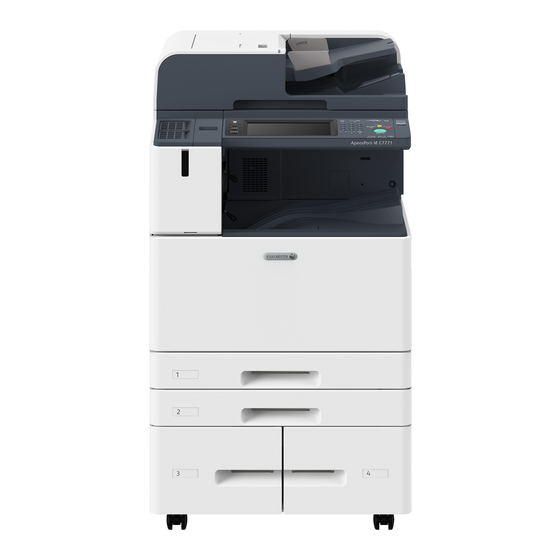
Fuji Xerox ApeosPort-VI C7771 Administrator's Manual
Hide thumbs
Also See for ApeosPort-VI C7771:
- User manualline (555 pages) ,
- Quick reference (155 pages) ,
- User manual (22 pages)
Table of Contents
Advertisement
Quick Links
Advertisement
Table of Contents














Need help?
Do you have a question about the ApeosPort-VI C7771 and is the answer not in the manual?
Questions and answers